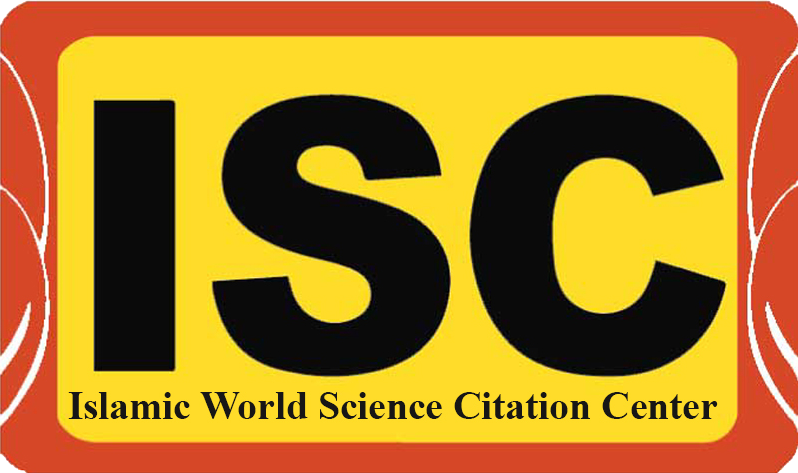Application of Eco-Friendly Engineering Principles in Designing Climate-Resilient Urban Spaces
Climate change, as one of the major environmental challenges, has severe impacts on urban infrastructure and city life. This article explores the application of eco-friendly engineering principles in urban design to enhance the resilience of urban spaces against climate change. Using a qualitative content analysis methodology, the study examines theoretical foundations, successful case studies, and identifies the challenges and opportunities of integrating eco-friendly principles into urban planning. The findings reveal that implementing green infrastructure, water recycling, the use of recycled materials, and reducing energy consumption can significantly improve urban quality of life and environmental sustainability. Additionally, key challenges, such as financial and policy constraints, lack of awareness, and executional obstacles, may hinder the effectiveness of these principles. The study proposes recommendations for strengthening international collaboration, expanding specialized training, and developing supportive policies. It also highlights the importance of using smart technologies for resource management and establishing educational platforms for citizens and policymakers. Given the growing significance of climate change, applying eco-friendly principles in urban design not only helps mitigate climate impacts but also serves as a sustainable approach to enhance urban quality of life and livability.
Application of Ergonomic Principles in Urban Public Space Design: A Study of Contemporary Models
This study examines the application of ergonomic principles in urban public space design and its effects on user experience and social interactions. The aim is to analyze how innovative ergonomic models can enhance urban quality of life and user satisfaction within public spaces. Findings indicate that ergonomic designs not only improve physical comfort and reduce fatigue but also increase social interactions and strengthen users' sense of place attachment. Using semi-structured interviews with public space users in Tehran and qualitative data analysis, this research explores the impact of ergonomic furniture, easy accessibility, and multifunctional spaces, demonstrating how these factors contribute to creating dynamic and engaging environments. The study concludes with recommendations for future ergonomic designs, including addressing diverse user needs, implementing smart technologies in public spaces, and incorporating flexible designs. Additionally, suggestions for future research include investigating the effects of ergonomics on users' mental and physical well-being and adapting ergonomic principles to different cultural and climatic contexts.
An Analysis of Identity Patterns in Urban Space Design Based on Islamic Art Principles
This study examines the role of Islamic art principles in enhancing cultural identity and place attachment in urban space design. The use of key elements of Islamic art, such as structured geometry, specific colors, repetitive patterns, and cultural symbols in architecture and urban design, not only beautifies spaces but also fosters a spiritual and emotional bond between citizens and their surroundings, strengthening their sense of place attachment. Findings reveal that using geometry and symmetry in the design of mosques and public squares promotes a sense of order and harmony among individuals, providing spaces for social and cultural interactions. Additionally, the use of calming colors like blue and green, commonly found in Islamic art, enhances the sense of attachment and spiritual connection. Analysis of symbols and repetitive patterns shows that these elements contribute to cultural identity reinforcement by creating a sense of continuity and stability in public spaces, fostering a deeper bond with local values. This research proposes design strategies based on Islamic art principles to create meaningful and identity-driven urban spaces that align not only with physical needs but also with the cultural and spiritual requirements of individuals. This approach offers an effective solution to address globalization challenges and preserve cultural and social values in Islamic cities.
Exploring the Impact of Semi-Open Spaces on Social Interactions in Modern Cities
This article examines the impact of semi-open spaces on social interactions in modern cities. The primary aim of this research is to identify and analyze the factors in semi-open space design that can enhance social interactions and improve urban quality of life. This qualitative study utilizes direct observations, semi-structured interviews, and content analysis. Findings indicate that semi-open spaces, by providing a welcoming environment, facilitate social interactions and play a significant role in reducing social isolation. Key factors identified for improving the quality of social interactions include access to natural elements, appropriate lighting, available amenities, and privacy preservation. Additionally, the role of cultural and social values in influencing the use and level of social interactions in semi-open spaces is emphasized, highlighting the need for culturally sensitive design. Practical recommendations for urban designers and architects are offered, along with suggestions for future studies on the influence of amenity types and cross-cultural comparisons of semi-open space usage.
Aesthetic and Functional Analysis of Urban Public Spaces Based on Environmental Psychology Principles
This study analyzes the aesthetics and functionality of urban public spaces based on environmental psychology principles, examining the importance of designing these spaces to enhance users' quality of life and mental well-being. Urban public spaces serve as hubs for social interactions and reinforce place attachment, and improving their design can positively impact user behavior and emotions. This review study explores relevant literature to provide a theoretical framework and conceptual model for analyzing such spaces. The findings reveal that incorporating visual elements like lighting, color, and artistic forms in public space design can strengthen feelings of security, tranquility, and place attachment, while also fostering social interactions. Moreover, the results indicate that blending environmental psychology and aesthetics in public space design can reduce stress and improve urban quality of life. This study addresses existing limitations and provides recommendations for future research, including conducting field studies and investigating the effects of varied designs on different age groups. Aimed at establishing a practical model for urban designers and planners, this study demonstrates how well-designed public spaces can promote community cohesion and enhance social connections.
The Impact of Movable Structures in Interior Space Design Using Smart Architecture Principles
This article explores the role of movable structures in interior design through the lens of smart architecture, analyzing their impact on efficiency, flexibility, and user experience within interior spaces. This review-based study reveals that movable structures, with their capacity for immediate spatial adjustments, allow users to modify their environment according to daily functional and aesthetic needs. Findings indicate that this type of interior design, especially beneficial in small and multifunctional spaces, not only enhances spatial efficiency and reduces structural costs but also contributes to improved quality of life and a heightened sense of belonging among users. The study also addresses practical challenges in implementing smart architecture in interior design, identifying issues such as high costs, technical complexity, and maintenance requirements. By analyzing these challenges and offering recommendations, this paper aids designers and architects in finding more effective solutions for integrating movable and smart structures. Lastly, this research emphasizes the fundamental role of smart architecture in the future of interior design, providing suggestions for further studies to advance smart, sustainable, and eco-friendly technologies. These findings serve as a valuable resource for architects and researchers aiming to enhance efficiency, energy savings, and user experience within interior spaces.
Examining the Principles of Cultural Integration in the Design of Modern and Historical Urban Spaces
This article examines the principles of cultural integration in the design of modern and historical urban spaces. The primary objective is to analyze methods and strategies that combine cultural and historical elements with modern needs to create cohesive, sustainable, and culturally rich spaces. In this review study, the concept of cultural integration and its importance in urban architecture are initially defined and elaborated. Subsequently, existing theories and models in this field are examined, along with a review of previous studies on cultural and architectural interactions. Findings reveal that cultural integration can enhance local identity, increase a sense of belonging, and improve the quality of urban life, though challenges such as economic constraints and cultural differences remain. Case studies from cities like Istanbul, Barcelona, and Shanghai indicate that public space designs, respecting both local culture and modern architectural elements, can attract tourists, enhance social interactions, and strengthen community cohesion. Finally, recommendations are provided for improving urban design based on cultural integration, including participatory approaches, attention to cultural diversity, and leveraging modern technologies. This research can serve as a theoretical framework for developing cities with both cultural identity and modern functionality.
Application of Environmental Psychology Principles in the Design of Therapeutic and Educational Spaces
This article examines the application of environmental psychology principles in the design of therapeutic and educational spaces, assessing their role in enhancing user experience in these environments. The study aims to identify and analyze factors within environmental design that contribute to stress reduction, increased focus, and improved overall user satisfaction in therapeutic and educational settings. Findings indicate that natural elements, such as natural lighting and plants, effectively reduce anxiety and promote a sense of calm in therapeutic spaces. Additionally, using calming colors and spatial layouts that ensure privacy fosters a positive therapeutic experience. In educational environments, environmental psychology principles, including natural lighting, motivating colors, and flexible layouts, enhance focus, encourage social interactions, and improve students' academic performance. This research underscores the significance of efficient design in therapeutic and educational spaces and suggests that designers and architects prioritize psychological and social needs of users in their designs. Integrating smart technologies and sustainable principles can lead to high-quality, user-friendly environments. Finally, the article highlights the need for further research on the combined effects of environmental psychology principles across different cultural and age groups.
About the Journal
Manifestation of Art in Architecture and Urban Engineering is an interdisciplinary, peer-reviewed journal dedicated to exploring the intersection of artistic expression and the built environment. This journal serves as an international platform for scholars, architects, urban engineers, designers, artists, and researchers to present their studies, insights, and innovative approaches that enrich and expand the fields of architecture and urban engineering. Published quarterly, each issue features articles, case studies, reviews, and essays that aim to bridge the gap between artistic theory and practical architectural applications, encouraging an integrative approach to design, functionality, aesthetics, and human experience in constructed spaces.
Current Issue

Articles
-
Aesthetic and Functional Analysis of Urban Public Spaces Based on Environmental Psychology Principles
Leila Naseri ; Hossein Karimi Nia * ; Nastaran Bahrami15-25 -
Exploring the Impact of Semi-Open Spaces on Social Interactions in Modern Cities
Amir Hossein Rezaei ; Samaneh Salehi *26-40 -
An Analysis of Identity Patterns in Urban Space Design Based on Islamic Art Principles
Mehdi Hosseini Tabatabaei ; Zahra Mousavi Fard *41-56 -
Application of Ergonomic Principles in Urban Public Space Design: A Study of Contemporary Models
Mohammadreza Adloo *57-70 -
Application of Eco-Friendly Engineering Principles in Designing Climate-Resilient Urban Spaces
Zeinab Roshandel ; Ahmad Kazemi *71-82











